Union Hall History
Posted on November 24, 2025 by Marie Jansen
We’ve been sharing a lot about the archaeological sites we investigated for the I-10 Mobile River Bridge Archaeology Project, but we also recorded historic buildings as well! There were 34 historical structures in the project area, but only one was eligible for listing to the National Register of Historic Places: the Union Hall building at 300 South Royal Street. Though the structure is no longer standing, it played an important role in the development of Mobile’s shipyard industry.
 Mobile’s Union Hall Building when it was documented in 2012
Mobile’s Union Hall Building when it was documented in 2012
This area of Mobile was originally platted as residential neighborhoods in the mid-to-late 1800s, scattered with small business such as groceries, restaurants, and druggists. In May of 1919, a fire destroyed 40 city blocks south of Madison Street, including the block where Union Hall sits. In the 1920s, the area was rebuilt as a more commercial and industrial area with lumber yards and other businesses relating to shipbuilding, including the Alabama Dry Dock and Shipbuilding Company (ADDSCO).
In the twentieth century, the Union Hall building was used as a meeting space for Local 18 of the Industrial Union of Marine and Shipbuilding Workers of America (IUMSWA), representing shipyard workers at ADDSCO. The IUMSWA was organized in 1933 in an effort to improve wages, obtain better working conditions, and lobby for a 40-hour work week for all employees associated with the American shipbuilding industry. Within a few years, IUMSWA established a presence along the Gulf Coast, including the Local 18 chapter in Mobile.
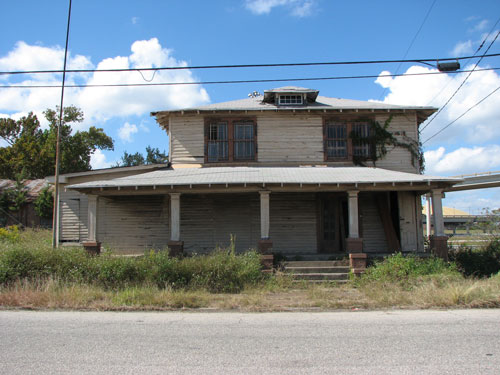
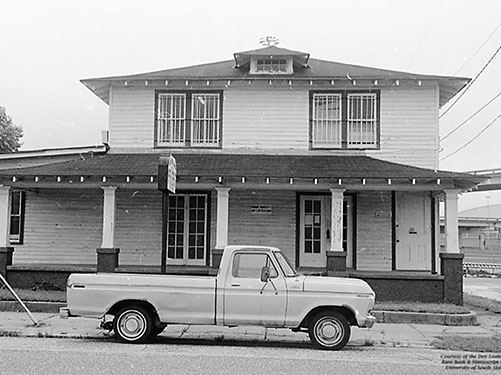
Mobile’s Union Hall building in 2012 (on left) and in 1988 (on right). Photo courtesy of Mobile Historical Development Commission, The Doy Leale McCall Rare Book and Manuscript Library, University of South Alabama.
The two-story building was originally built as a residence in 1940, but only served as a home for six years before it was purchased by the Local 18 Chapter of IUMSWA. In 1949, the Mobile Industrial Union Council (MIUC) and the Gulf Coast News Digest, the official weekly newspaper of Shipbuilders Local 18, added their operations to the building. For about 45 years, Union Hall held the offices of the local union chapters of the IUMSWA and the United Steel Workers of America (USWA). The chapter meetings were held in Union Hall on the fourth Saturday of each month in the 1970s and 1980s, until it shut down in 1989. The Union Hall building was then used for file storage by the Bender Shipbuilding and Repair Company, Inc. until 2010.
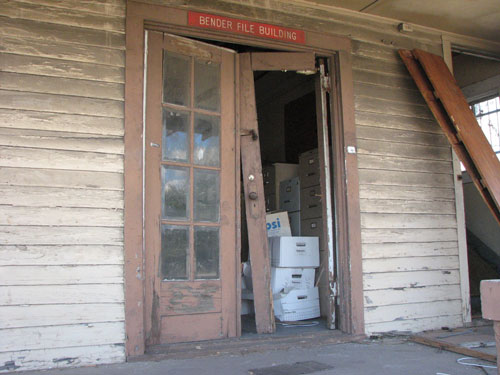 The Union Hall was most recently used as storage for the Bender Shipbuilding and Repair
Company. Pictured here in 2012 when the structure was demolished.
The Union Hall was most recently used as storage for the Bender Shipbuilding and Repair
Company. Pictured here in 2012 when the structure was demolished.
While the interior of the building wasn’t surveyed, interviews with former union members indicate that the first floor was an open room used as a meeting hall. The space featured a semi-circular platform with a podium and a seating area for union officers. There was also a print set-up that produced the Gulf Coast News Digest on the first floor, while the second floor held the offices of the union chapter president, executive secretary, secretary, and bookkeeper.
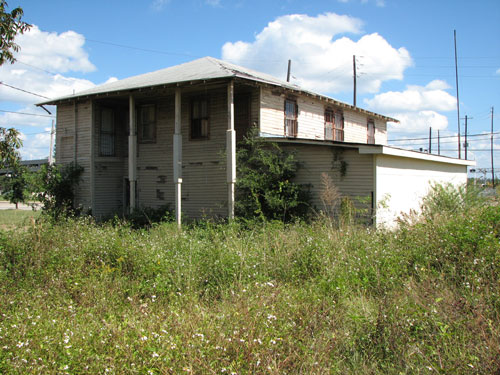
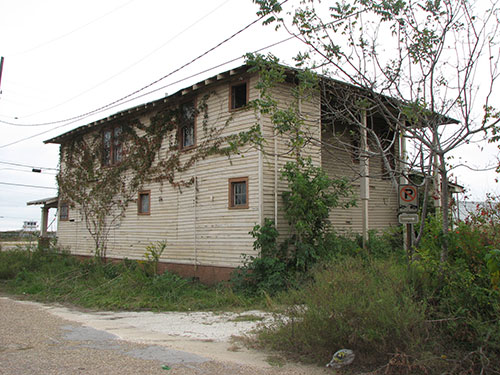
The Union Hall building when it was recorded in 2012
When it was recorded in 2012, Union Hall was in fair condition and still maintained its overall historic appearance of a residential structure built in 1940. The building was roughly square and approximately 3,800 square feet. It had an exterior wooden siding and was set on a brick foundation that was stuccoed and painted. The fixed windows had original wood frames and some had cast iron security bars. The structure was demolished in the mid-2010s as part of the I-10 Mobile River Bridge and Bayway Project.
Shipbuilders Local 18 served as a pivotal organization in the industrial labor movement
in Mobile, Alabama, protecting thousands of shipyard workers during their employment
at ADDSCO and in retirement. For over four decades, Local 18 made significant and
tough decisions to protect the livelihoods, health, and well-being of union members
and
their families during turbulent times of the twentieth century.
This blog post was adapted from the report “Local 18 Union Hall” by Bonnie Gums and written by Marie Jansen, a Communications graduate from the University of South Alabama.


